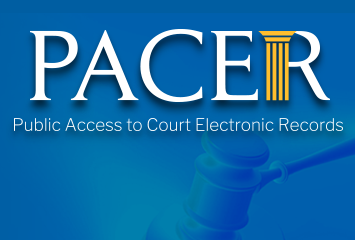Several Easy-to-Rebut Points Made by the Judiciary in Their Latest Anti-Free PACER Letter
See the judiciary’s letter here. Our response is below:
 MYTH: The Administrative Office will work with the General Services Administration to implement GSA’s recommendations on modernizing CM/ECF and PACER.
MYTH: The Administrative Office will work with the General Services Administration to implement GSA’s recommendations on modernizing CM/ECF and PACER.
FACT: The AO plans only to be “guided by recommendations” (p. 1) from 18F, GSA’s in-house tech consultancy, but not actually use 18F to do the work. Instead, they plan to waste taxpayer money by hiring private sector consultants, and in fact signed a five-year, up-to-$298 million contract with General Dynamics in May
MYTH: The AO wants access to court filings to be free to the public.
FACT: Though AO Director Mauskopf says in her letter that the Judicial Conference has a “continued commitment to increase free public access to judicial records,” nowhere in the letter does she say access to filings will be free. Free searches? Maybe. Free documents? No. There is no guarantee that whatever new system the AO and its consultants dream up will require free access to documents. The Senate Judiciary Committee-passed Open Courts Act (S. 2614 / H.R. 5844), on the other hand, requires free access.
MYTH: The OCA requires the judiciary to ask Congress, per Mauskopf’s letter, for “half a billion dollars in new discretionary appropriations to make up for shortfalls” (p. 2).
FACT: The things that PACER fees were funding — an expensive and complicated document access system, flatscreens in jury boxes, e-notifications on bankruptcies and juries — do not need to be funded at current levels into the future. The Appropriations Committees could simply zero those out, and no one would be harmed. Frankly, that should already be happening, as the AO has on hand $77.7 million in its electronic public access (EPA) balance (p. 9) yet wants another $182 million for such programs in FY23. With PACER fees bringing in $142 million in FY23, that plus their current balance is plenty to fund EPA programs.
MYTH: The OCA will raise filing fees up to 40 percent on average during the time that new/free PACER is being developed.
FACT: The OCA does permit raising filing fee on certain users — though, critically, which the AO leaves out, not on IFP filers or first-time filers, and only if the Judicial Conference says it’s necessary (it’s likely not) — but if it happens, it wouldn’t at the rates the AO assumes. If you look at the CBO score, the filing fee increases bring in $85 million per year from 2026-2028 and then drop to $17 million per year from 2029-2032. Why is that? First, why wouldn’t the CBO even out the increases over time? That was odd. And second, why does the AO need the $323 million such increases would generate? It doesn’t.